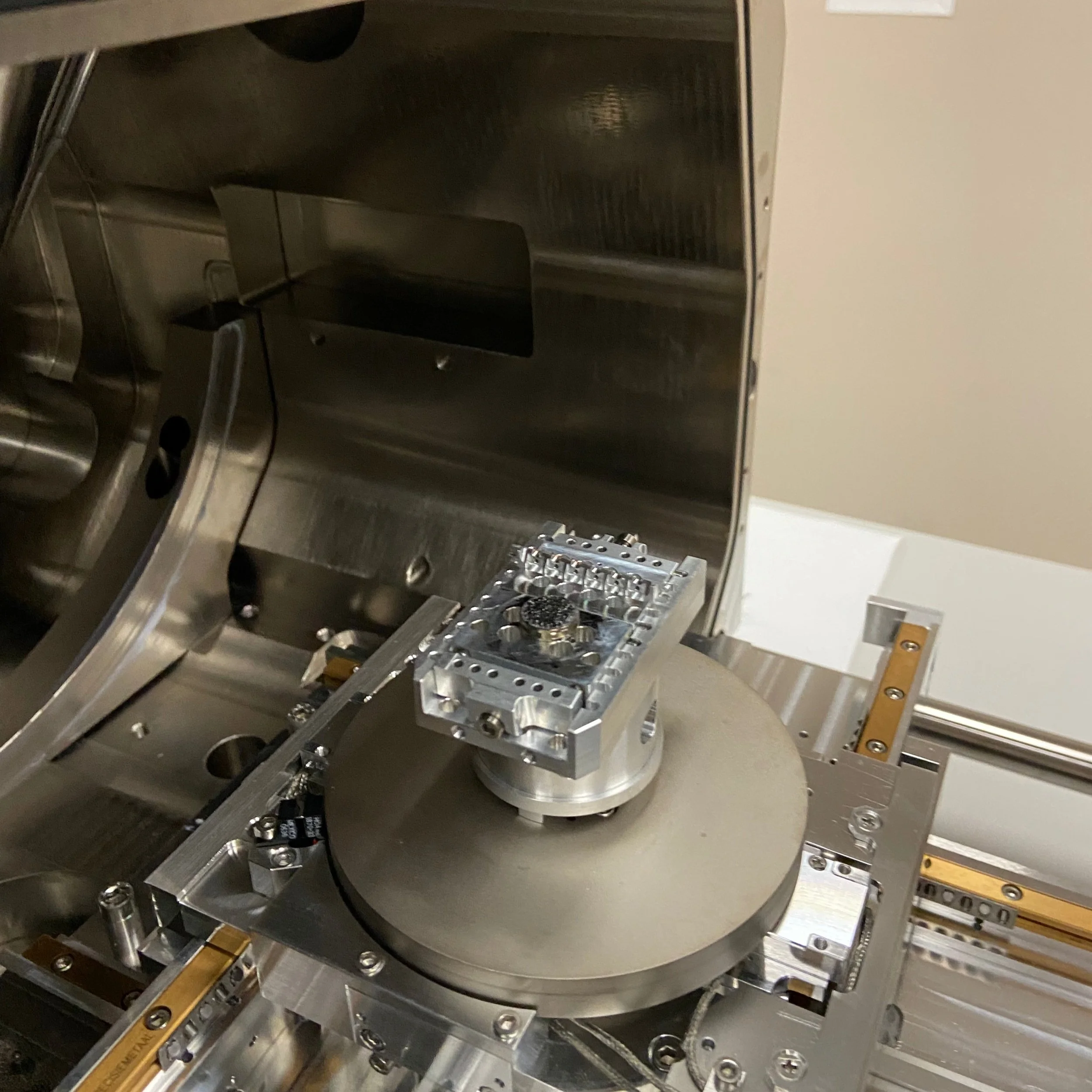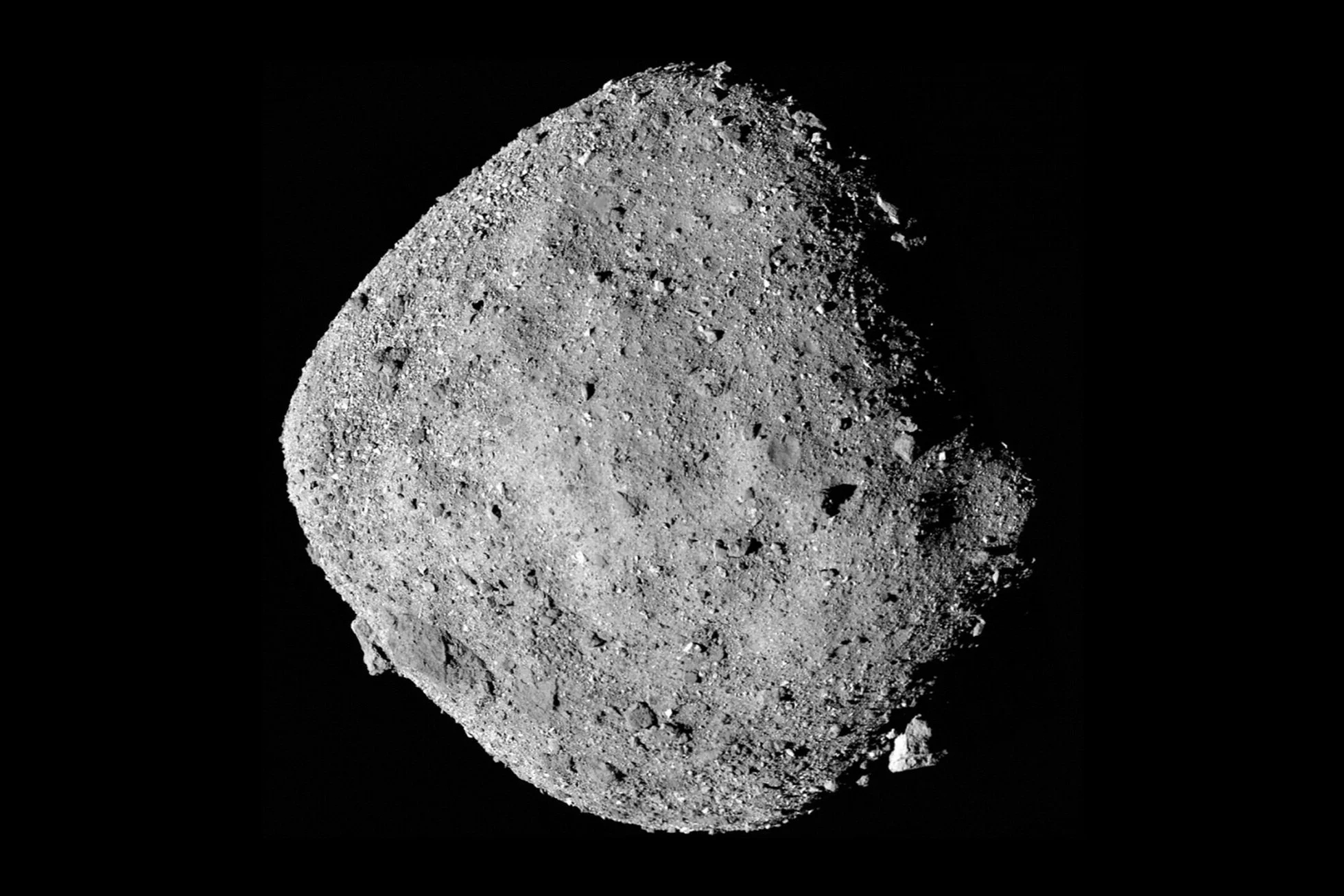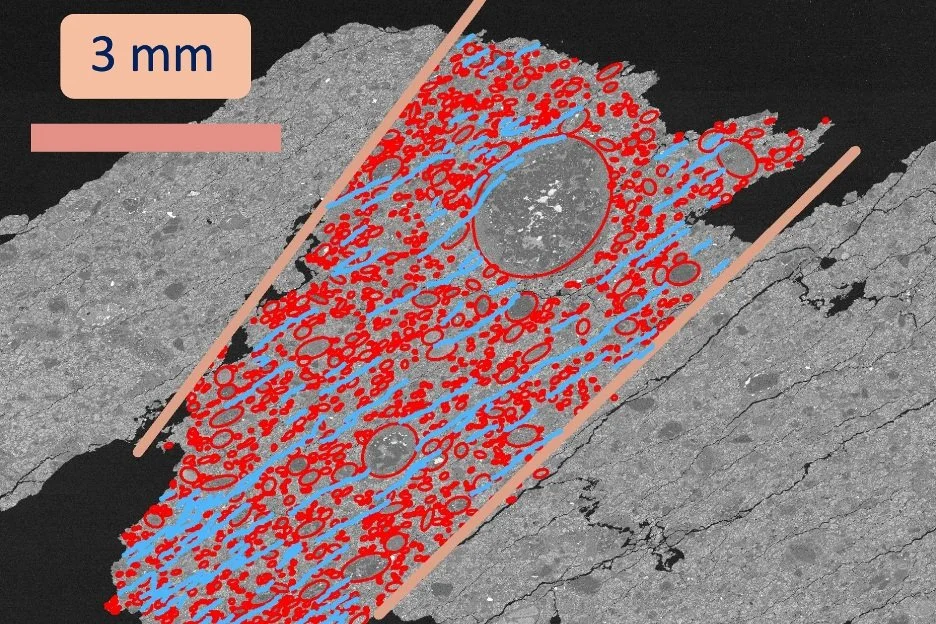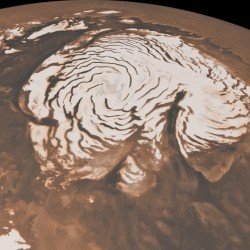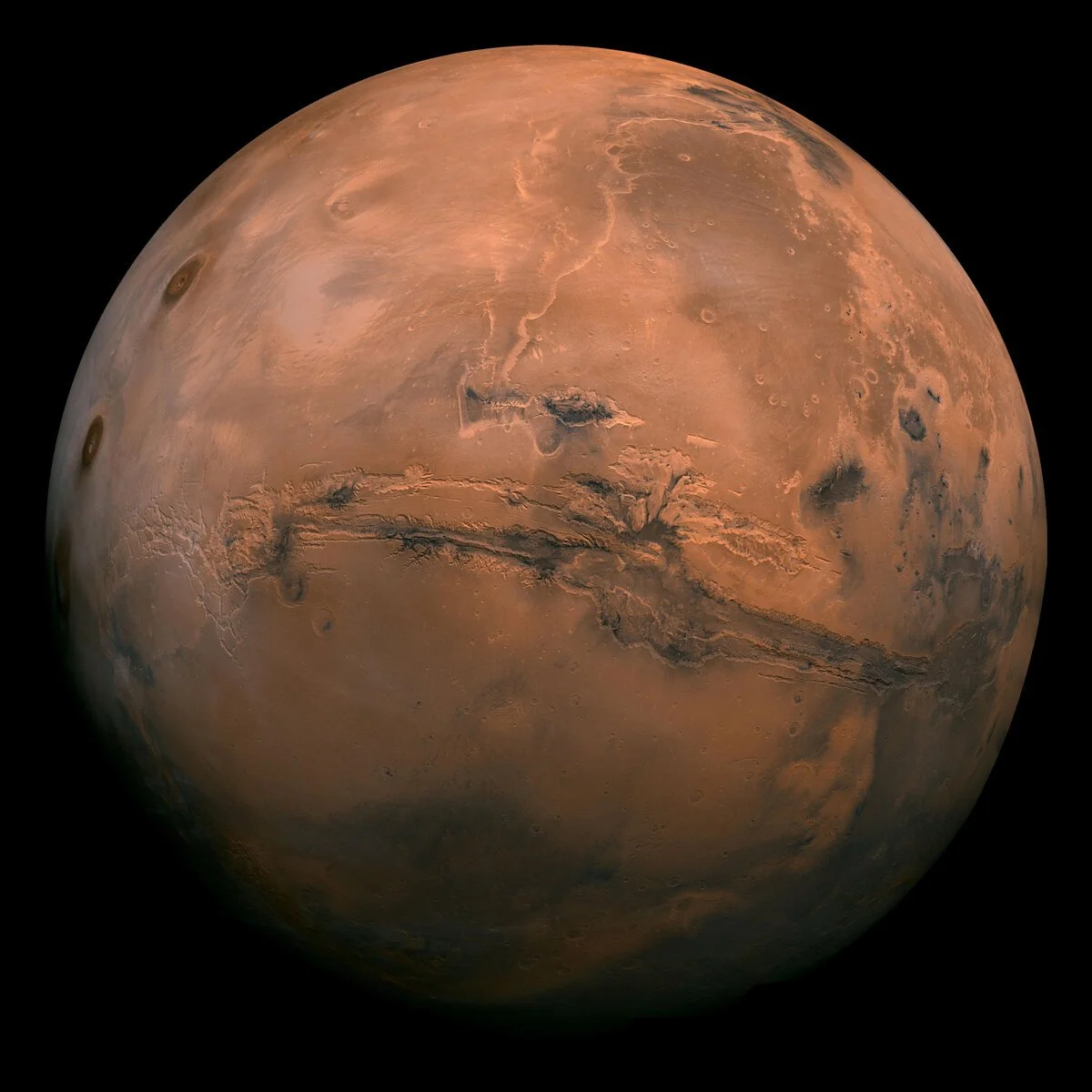Research
please feel free to contact me if you’d like to further discuss any of these!
planetary geology.
Asteroid (162173) Ryugu
Airless planetary surfaces are characterized by a distinct lack of an atmosphere or magnetic field, leading to direct exposure to the effects of hypervelocity micrometeoroid impacts and solar wind ion irradiation [1]. These processes, cumulatively known as space weathering, gradually alter the microstructural and chemical properties of the grains on airless surfaces. Signatures of space weathering include vesiculated textures, amorphous grain rims (upper ~100 nm), solar flare tracks, and Fe-bearing nanoparticles (npFe) [2,3].
I conduct X-Ray Computer Tomography (XCT) analyses to identify different phases (e.g., sulfide minerals) and their spatial distribution using Dragonfly software, and continue the analyses using the scanning electron microscope (SEM and transmission electron microscope (TEM).
This work has been funded the National Science Foundation Graduate Research Fellowship (NSF GRFP).
Image: SEM sample holder at NASA JSC.
Asteroid (101955) Bennu
I. Background.
In 1999, scientists discovered asteroid 101955 Bennu using the Arecibo Observatory and the Goldstone Deep Space Network. Bennu is a carbonaceous near-Earth asteroid, a descriptor that made the asteroid conjure significant scientific interest. Orbiting in the vacuum of space, Bennu likely contains material that has been unaltered since the formation of our solar system. Additionally, since the asteroid orbits in close proximity to Earth, it is easier to reach compare to those in the asteroid belt between Jupiter and Mars.
And so, the Origins, Spectral Interpretation, Resource Identification, Security, Regolith Explorer (OSIRIS-REx) spacecraft was developed, and it launched in 2016 to study Bennu’s physical and chemical properties as well as collect a sample of Bennu’s regolith. Through OSIRIS-REx, we’ve been able to identify rockslides, ridges, impact craters, and another phenomena never seen before on the surface of an asteroid: particle ejections! On October 20th 2020, the Touch-And-Go Sample Acquisition Mechanism (TAGSAM) successfully captured much more than the targeted 60 ounces of material, which is now on its way back to Earth, due to arrive in September 2023.
II. Characterizing Bennu’s Surface Geology
When observing Bennu from Earth, scientists expected the asteroid’s surface to be filled with large swaths of fine-grained sediment, areas which are relatively easy to sample. However, when OSIRIS-REx arrived at Bennu in late 2018, the mission encountered a surprising sight: a surface covered in tens of thousands of boulders that varied in size, color, morphology, and other characteristics. My research on Bennu primarily focused on characterizing the asteroid’s unexpected surface geology by assessing its boulder morphology. The goal was to map key characteristics of boulders in order to create a working classification system for boulders on Bennu and characterize their diversity, thus providing insight into Bennu’s surface processes.
III. Micro-spatial Foliation Studies
Spectra gathered from the OSIRIS-REx Thermal Emission Spectrum (OTES) found that the asteroid’s boulders are most closely analogous to CM chondrites. We used backscattered electron imaging and micro-geospatial mapping of thin sections of CM chondrites, which measured only a few millimeters in length, in the museum’s collection to study the fabric of these potential analogues.
Check out the NHRE Poster for this project here.
Advisors: Drs. Erica R. Jawin, Cari M. Corrigan, and Tim J. McCoy | Smithsonian National Museum of Natural History
Image of asteroid Bennu taken by the OSIRIS-REx spacecraft. Credits: NASA/Goddard/U. of Arizona.
Artistic rendering of the OSIRIS-REx spacecraft. Credits: NASA.
Micro-geospatial mapping of the particles within MET00434, a meteorite that is analogous to boulders on Bennu.
Mars
Paraglaciation within Craters at the Mid-Latitudes.
On Earth, the process by which an environment transitions from a glacial period to an interglacial period is known as paraglaciation, and it comes with a distinct set of geomorphic features. We identified this group of paraglacial features within craters on the mid-latitudes of Mars, which indicated that these craters hold records of Mars’ recent glacial history. We proceeded to extensively map these craters to quantify the extent of paraglaciation on Mars and constrain localized and global patterns of deglaciation across the surface of Mars.
Check out the LPSC abstract for this poster here and listen to the GSA Annual Meeting oral presentation here.
Advisors: Drs. Erica R. Jawin and Joseph E. Panzik
Ice Sublimation on the North Polar Layered Deposits.
On Planum Boreum (the north polar ice cap on Mars), there are these deep depressions that dissect the ice cap known as spiral troughs. These spiral troughs are layered, indicating that they preserve a record of past climate on the surface of Mars, but the challenge is learning how to interpret this record. We also noticed that there were these perennial dust veneers that covered some of the polar ice, and our goal was to determine the effects of this veneer on long-term trough evolution. By creating protrusion profiles using HiRISE DEMs, we argued that these dust veneers inhibited the rate of sublimation on the spiral troughs since the areas covered by this layer of dust were less protrusive than dust-free areas.
Check out the LPSC abstract for this poster here.
Advisors: Drs. Alyssa C. Pascuzzo and John F. Mustard
Sketch map of a crater on Mars, showing the key paraglacial features. Credits: Jawin et al. (2018)
Northern ice cap of Mars, showing spiral troughs and Chasma Boreale. Credits: NASA
Mosaic of the Valles Marineris hemisphere of Mars projected into point perspective. Credits: NASA/JPL-Caltech.
Moon
Selenodesy and Visualization for Future Lunar Exploration Missions.
While at NASA Ames Research Center, I was brought on a project who’s objective was to develop a planetary-spatial visualization application for future lunar landing missions. To accomplish this, I created a reference database that reflected the most recent dynamic and geometric selenocentric lunar parameters and worked on the software development side of implementing this data into NASA WorldWind. Additionally, I compiled sources of Lunar Digital Elevation Models and lunar imagery to import to the new application. The final part of my project included cross-referencing the imported data with other existing lunar globes to corroborate the placement and visualization of the novel data.
Advisors: Dr. Parul Agrawal and Miguel D. Castillo
Mosaic of the Moon taken from Galileo’s imaging system. Credits: NASA/JPL-Caltech.
paleobiogeography.
Echinoderms
Echinodermata is a phylum of marine animals that usually have five-point radial symmetry, and includes famous members such as starfish, sea urchins, sand dollars, and sea cucumbers. For one research project, I aided in a literature review of the spread of echinoderms across the globe through geologic time, with the aim of constructing a dataset to examine disparities within echinoderms and their dispersal as time continued.
Additionally, we conducted an in-depth review of crinoids, which are another subphylum of Echinodermata and includes marine animals like sea lilies and feather stars. We focused on conducting a digital growth study of Erisocrinus typus by measuring juvenile and adult specimens and analyzing the results to further comprehend the growth patterns of this species.
Advisor: Dr. Sarah Sheffield
A starfish, exemplifying the five-point radial symmetry typical of adult echinoderms. Credits: Robert Reid

